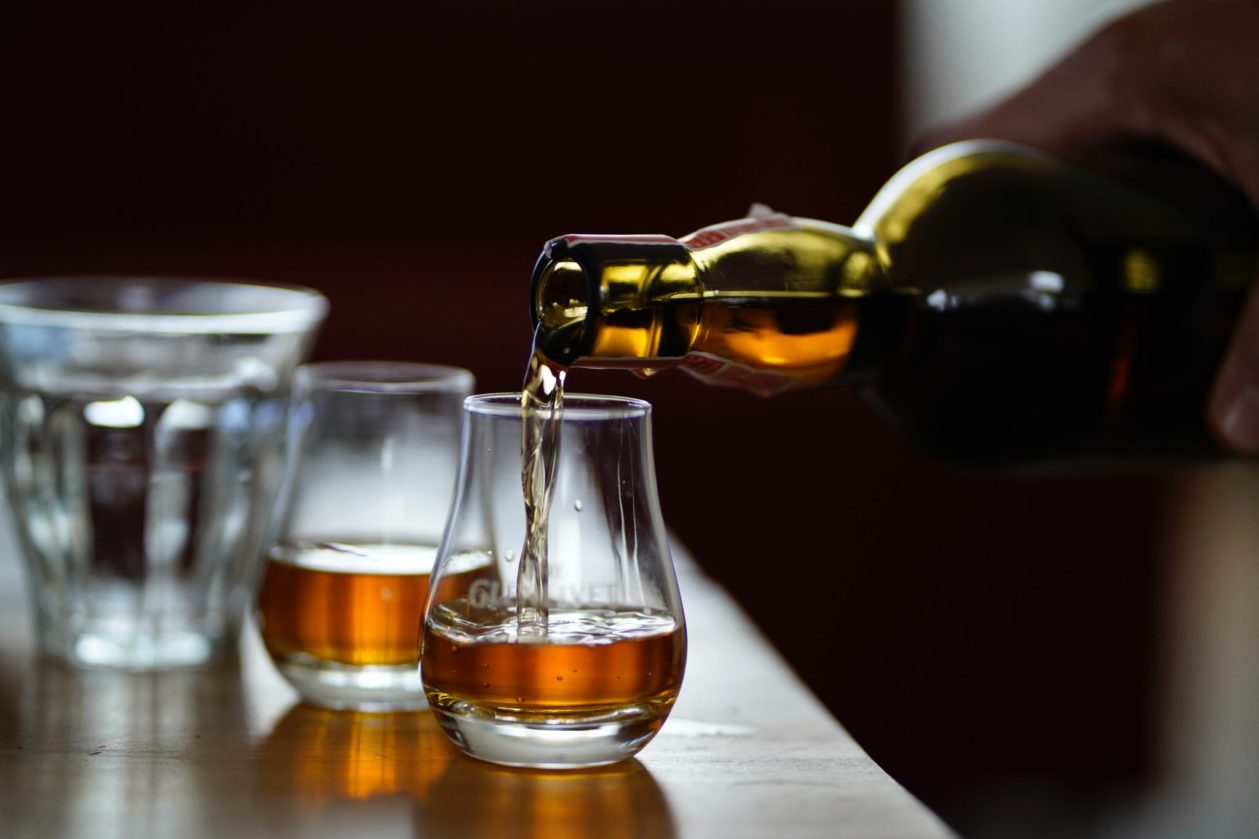When markets are shaky, investors typically pour capital into “safe havens”—asset classes that typically hold up during turbulent times. These are the usual suspects—gold, treasury bills, reserve currencies—tried and tested with long track records and plenty of data to spill over. This exclusive club of go-to assets rarely admits new members, but could that be about to change? An unlikely contender awaits in the wings: whiskey.
Last year’s Knight Frank Luxury Investment Index estimated that rare whiskey has seen its asset value grow by a staggering 564 percent over the last 10 years. Fine wine, watches and vintage cars were beat by comfortable margins. 2019 saw a new record set for the most paid at auction for a bottle of the good stuff; a 60-year-old Macallan from 1926 fetched just north of $1.8 million at Sotheby’s in London. With Macallan on the verge of releasing an ultra-small batch of bottles of 71-,74- and 78-year-old Scotch (the latter being the oldest Macallan has ever released), that record is unlikely to stand for long. American whiskies have gotten in on the action, too; a barrel of Michters recently changed hands at a charity auction for $210,000, the highest amount ever paid for a single cask of bourbon. We barely need to mention how Japanese bottlings are faring; a 52-year-old Karuizawa recently went for nearly half a million dollars, and interest in Japan’s oldest and rarest stocks shows no sign of waning.

OK, so, the numbers speak for themselves. But, seriously? Is whiskey a real way to diversify your portfolio?
As someone who has just bought a few thousand barrels of Kentucky bourbon, Ben Tsai certainly thinks so. Tsai is the managing partner at Wave Financial, an asset management firm which made a few heads turn when they announced their Kentucky Whiskey Digital Fund. The closed-end fund is buying up newly filled casks of spirits from Wilderness Trail Distillery to sit on for four to six years before selling the mature stock either back to the distillery (or other bourbon brands), to cask brokers or to overseas markets. With an agreement to lay down and store as many as 20,000 barrels of the good stuff at Wilderness Trail, the fund could grow to $25 million.
Newly filled casks can be bought cheaply as there is relatively little value in ultra-high proof, immature spirits, while aged, quality stock that is ready for bottling fetches an impressive premium. According to Wave’s research, barrels typically appreciate three to five times steadily over five years. In an industry where distilleries trade barrels and non-distillery producers buy and bottle matured stock, Tsai is confident that the fund will have few issues exiting their investment. “The broker market is robust here in the U.S., both for domestic consumption and for exports to other countries, and demand is expected to increase over the next few years,” Tsai explained.
If the numbers prove true, the fund is hoping to deliver investors a not too shabby internal rate of return of 20 percent over a five-year period.
More interestingly still, Wave is tokenizing the fund so that investors, after the first year, will be able trade their units in the fund on a digital exchange, giving them potential liquidity and thus the ability to exit their investment during the aging process. Tsai does concede, however, that the liquidity of investors’ tokens depends on participation levels on the digital trading platform. “Digital platforms in the U.S., and globally, are starting to gain traction for trading of private funds and other assets such as our Kentucky Whiskey Fund,” he said. “As more investors understand these avenues for investments, they will be able to pool together investment capital that will support the depth of the secondary market.”

From an industry perspective, the underlying model of selling new casks has the potential of taking a vast amount of stock off distilleries’ balance sheets. That could free up significant amounts of cash for capital projects, such as distillery expansions and new warehousing, while allowing the distilleries to buy back the stock they need at the time they need it.
Taking a slightly different approach to investing in, ahem, liquid assets such as whiskey is the Single Malt Fund, an operation regulated in Sweden but targeted at investors beyond Scandinavian shores. While Wave’s fund essentially commoditizes new make whiskey that can be sold on the open market after just a few years of aging, the Single Malt Fund invests in rare bottled stock and casks of already mature whiskey from some of the more elusive (and expensive) names in the industry.
Headed up by Christian Svantesson, a whiskey collector himself, the fund hopes to exploit the undersupply of older, more premium malts created by a perfect storm of lack of distillery capacity and unprecedented demand. “Quite simply, the world is nearly out of old whiskey,” Svantesson told Worth. He points to long production cycles, especially for Scotch single malts (10 to 15-plus years of maturation on wood is typical), which means that distillers pay an acute price for failing to predict future sales. “The industry is playing catch up with growing demand, but for aged stated single malts, it is helplessly running behind,” he said.
Svantesson is also quick to point out that unlike newly laid stock, bottles of old and rare whiskey are, by definition, limited. Over the passage of time, they are drunk, lost or broken. Certain styles are no longer produced, and some distilleries, shuttered in the whiskey market crash of the ‘80s, are forever lost and any remaining stock is frenzied over by investors and collectors alike. “In that sense, we’re in a rather enviable position; as the fund has been welcomed by the whiskey industry as a professional distributor, we are not only receiving an allocation of rarities, but are also able to buy directly from distilleries at trade prices. Better still, the prices of that stock on the secondary market continue to appreciate as existing bottlings become scarcer and scarcer,” Svantesson explained.
The whiskey that the fund acquires is managed and actively traded over its five-year investment period; old casks may be sold on to other buyers or even bottled and sold directly to consumers via the fund’s own online shop, a curious approach that would see the fund compete with independent bottlers and spirits merchants at the retail level.
While whiskey has a good decade or so of almost unrivaled growth behind it, it’s worth noting that efforts to expose a wider investor base to the potential upside are still nascent. Both Tsai and Svantesson’s funds are in their first rounds of fundraising, and other investment platforms are likewise still maturing, so to speak.
In any event, it’s hard not to wonder what the earliest distillers, the farmers and the crofters, would make of all this. To the 18th century Scottish farmer who crafted spirit from surplus grain to stave off the bitter cold winters, the notion of crystal decanter bottlings fetching thousands and hard papered prospectuses would surely be a truly baffling one.






